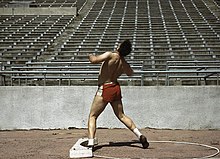TESOL/Dictation exercises
A dictation exercise is a type of exercise used in foreign language teaching including TESOL where students receive spoken input and must hold it in short-term memory and then reproduce it in writing.
Purpose
[edit | edit source]Dictation exercises can be used effectively as a consciousness-building activity in the ESL classroom. They help learners focus on certain areas of English and provide feedback on accuracy. For example, students can listen for the words other than nouns, verbs, adjectives, and adverbs in the teacher's recitation of a passage to build consciousness of those words.
Example
[edit | edit source]The teacher reads this.
In my house, Christmas is a happy time. Everyone sits around the Christmas tree and we exchange presents. My favorite part of Christmas is decorating the Christmas tree. I love the Christmas lights.
The students are given a worksheet like this beforehand:
__ __ house, Christmas __ _ happy time. Everyone sits ____ __ Christmas tree ___ __ exchange presents. __ favorite part __ Christmas is decorating __ Christmas tree. __ love __ Christmas lights.
Usually the teacher pauses after each phrase and reads each sentence twice, but the teacher may read faster or only read once to challenge stronger students.
As the teacher is reading, the students fill in the blanks.
Exercises
[edit | edit source]Tip: use the tab key to go to the next box quickly.
"House with Nobody in it"
[edit | edit source]This is a reading of "House with Nobody in it" (1914) by Joyce Kilmer.

Joanne Bradshaw
[edit | edit source]
